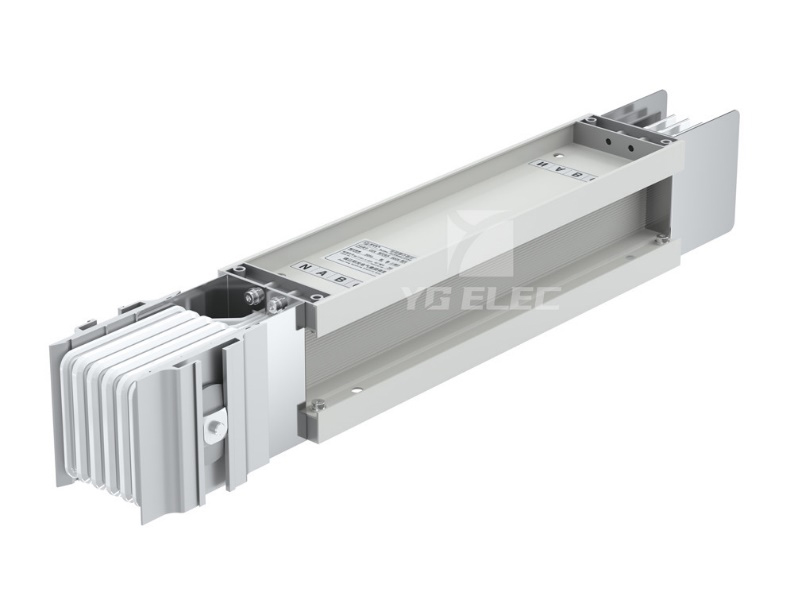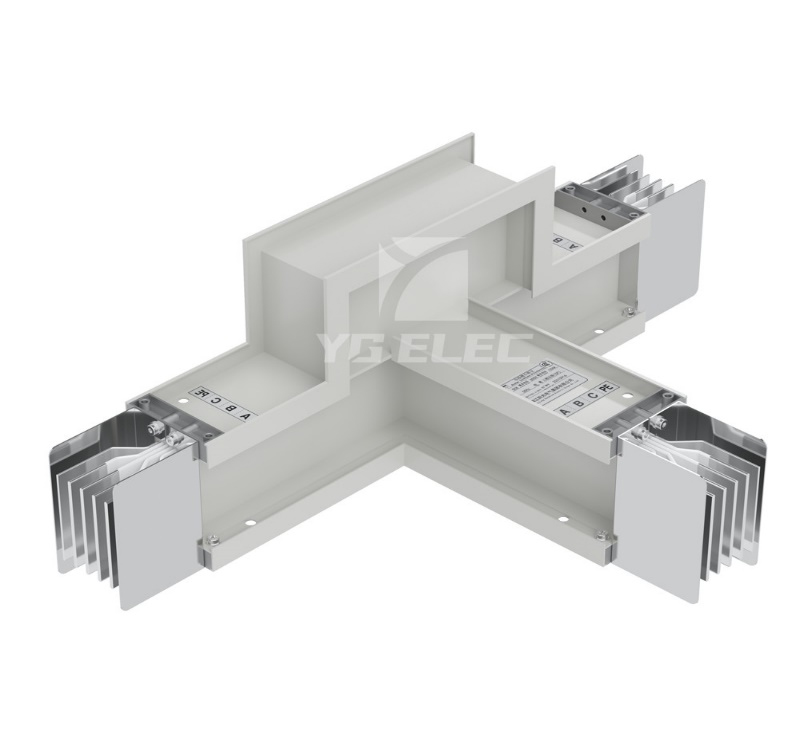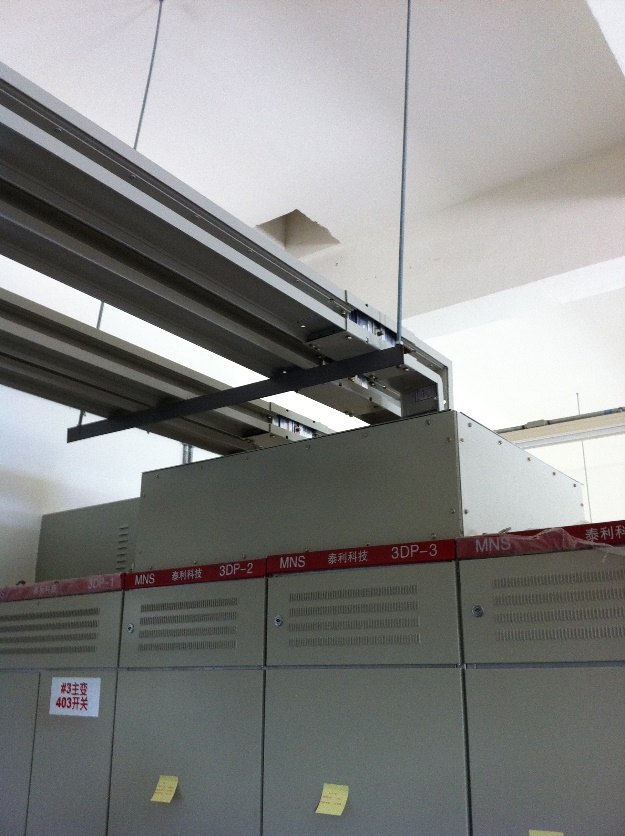Dense busbars are an alternative to traditional cables for the transmission of electricity and are made up of copper rows, shells, etc. Each copper row is wrapped with an insulating medium, and each copper row is closely packed together to form a three-phase four-wire or three-phase five-wire conductor, and the shell is generally earthed. The dense busbar is fixed by a high-strength metal shell, which can withstand large electrodynamic shocks and has a strong dynamic and thermal stability.

(straight length busway)

(T-bend through busway)
Dense busbar trough voltage to 400 V, rated working current of 250 ~ 6300 A. Dense busbar trough electrical equipment installation can be directly from the transformer to the low-voltage distribution cabinet, but also from the low-voltage cabinet directly to the distribution system as a distribution trunk line. Busbar troughs have the advantages of small size, compact structure, large transmission current and convenient maintenance. In short, they play a role in power transmission in the supply and distribution equipment in industrial and mining, enterprises and high-rise buildings. When carrying out installation, ensure that the dense busbar trough can be used normally after installation and that no other faults occur.

(Scene Photos)

(Scene Photos)
Busbar system is an efficient current distribution device, especially adapted to the needs of higher and higher buildings and large-scale factories economic and reasonable wiring. Modern high-rise buildings and large workshops require huge amounts of electrical energy, and the hundreds of amps of powerful current needed to face this huge load requires the use of safe and reliable transmission equipment, and busbar systems are a good choice.
Bus bar is a new circuit developed by the United States, called "Bus-Way-System", which uses copper or aluminum as the conductor, supported by a non-enabled
It is a new type of conductor formed by using copper or aluminum as the conductor, supporting it with a non-alloy insulation, and then installing it in a metal channel. It was actually used in Japan in 1954, and since then, bus-wire troughs have been developed. Nowadays, it has become an indispensable wiring method for electrical equipment and power systems in high-rise buildings and factories.
Due to the need for electric power in buildings, factories and other buildings, and the trend of this need increasing year by year, the use of the original circuit wiring method, i.e., through the pipe method, construction
However, if bus ducts are used, the purpose can be achieved very easily, and the building can also be made more beautiful.
The busbar can be used to make the building more aesthetically pleasing.
Economically speaking, bus ducts themselves are more expensive than cables, but using bus ducts can make the construction cost much cheaper when compared with various accessories for wiring and the whole power system (see sketch), especially in the case of large current capacity.
Post time: Mar-12-2022




